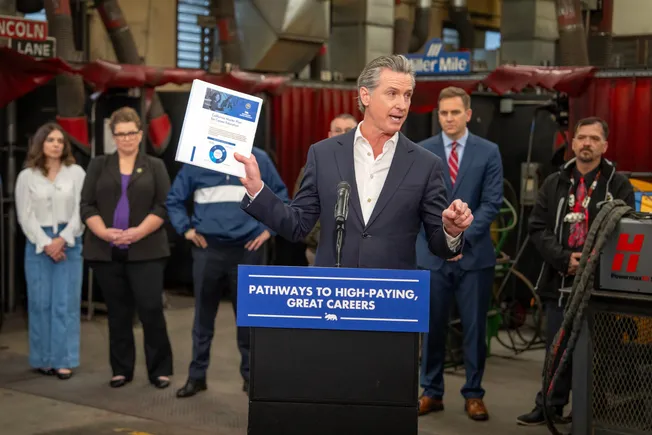Driving change is one of the most crucial skills for leaders today. According to Accenture, the rate of change has risen by 183% since 2019 and shows no signs of slowing.
Even leaders who’ve led through change have new hurdles to clear (like rising change fatigue and varying work environments) and new solutions to consider (like virtual collaboration tools). Managers who create a psychologically safe environment for their employees can reduce change fatigue by 46%, highlighting the importance of psychological safety in today’s rapidly evolving workplace.
The key to effectively leading change, then, is to do so with empathy and transparency. In the Leadership 480 podcast, Verity Creedy, leadership expert and VP of product management at DDI, shared her insights on how to do so.
Based on two decades of experience, Creedy reveals one critical step of driving change that leaders too often overlook and seven tips for driving change effectively to reduce change resistance.
What to do before leading through change
When driving change, leaders may initially experience a range of feelings, from insecurity to happiness to fear. However, the impulse to jump into action before fully processing those feelings is a common misstep. Your first step when leading change should be to stop and understand how you’re feeling.
“The leaders I’ve seen who are most successful at leading change and taking others through change are those who manage themselves and their emotions first,” says Creedy. Otherwise, if you’re disoriented or struggling with the change, it’s bound to sound inauthentic when you share it with your team, and they’ll quickly sense you haven’t bought in, Creedy explains.
Conversely, if you’re immediately sold on a change and start running with it, you may be running ahead with blinders on. And while you go through the motions at a hundred miles an hour, everyone else is still back at the start line, lacking buy-in (and likely not feeling very psychologically safe).
Make the time to self-reflect on the change before communicating it, understand its impact on you, and consider what it means for others.
7 tips for driving change with empathy & transparency
- Be appropriately transparent. When change occurs, discuss whether sharing with your team is appropriate. If not, don’t. If it is, be as transparent as possible by providing available context, including data, projections, and rationale, advises Creedy. It’s better to over-communicate than to under-communicate. Questions Creedy likes to ask include, “Can I share this? Will it help?”
- Embrace vulnerability. Sharing your own experience with change can help your team relate and feel psychologically safe. Creedy recalls an executive who did this well by saying, “Here’s how I felt a few weeks ago, here’s where I am today, and here’s where I’ve had light bulb moments.” They also acknowledged that others might initially feel similar and encouraged ongoing conversation. This type of authenticity also helps to build trust amongst your teams.
- Connect the dots. When tasked with driving change, one of your first reactions was likely, “What does this mean for me?” Creedy poses. This reaction is typically universal, regardless of seniority. When communicating change, have that answer handy and be ready to connect the dots so your team isn’t left guessing. If that isn’t possible, be ready to help your team identify what a change means for them as an individual and for the organization as a whole.
- Take in feedback. After communicating a change, discern how your team is processing it. Creedy suggests being direct and asking team members: “Now that I’ve shared that information with you, how are you feeling? What’s going through your head?” From there, communicate back what you hear to build trust. Creedy also cautions: “Try not to be defensive,” noting that this may occur when, as a leader, you’ve had two to three weeks to process and adjust to a change when others haven’t.
- Give people space. After communicating change, Creedy says, allow time for emotional hijacking to occur. “You’ll likely need to leave it, return on another day and re-communicate when emotions have been worked through,” as people can often listen more comfortably after emotional reactions have settled.
- Involve your team. Give your team opportunities to contribute to the change. To Creedy, soliciting employee suggestions for implementation will also feel more collaborative and allow people to feel like they have some control over their destiny. (Data agrees, indicating that involving employees in decision-making and implementation can boost the probability of change success by 12%.)
- Celebrate milestones. To Creedy, successful leaders always make the time to celebrate small wins with their teams to maintain the energy of the change and the energy of the people driving the change. “It’s so important people can see positive milestones as you reach them,” she adds.
What if your team is remote? When communicating or implementing change with a group virtually, Creedy suggests using collaboration tools for people to ask questions or share thoughts anonymously, creating psychological safety. Ideally, though, one-on-one meetings are most effective, as people can’t zone out or turn off their camera, Creedy offers.
Lead like the change depends on it
Because it does. According to McKinsey data, nearly two in five transformations fail because of employee resistance, and that’s at a time when employee support for enterprise change has fallen by 31 percentage points between 2016 and 2022.
This is why DDI’s training adopts a “head and heart” approach to engaging teams and overcoming resistance to change. By learning how to lead through change with empathy and transparency, leaders can decrease employee resistance while increasing the chance of the change’s success.
Discover how DDI training can help you develop leaders who can effectively lead through change, transforming your organization into more resilient, collaborative and dynamic. Learn more about the training that’s led 32% more leaders to be rated effective at driving change.






Leave a Reply